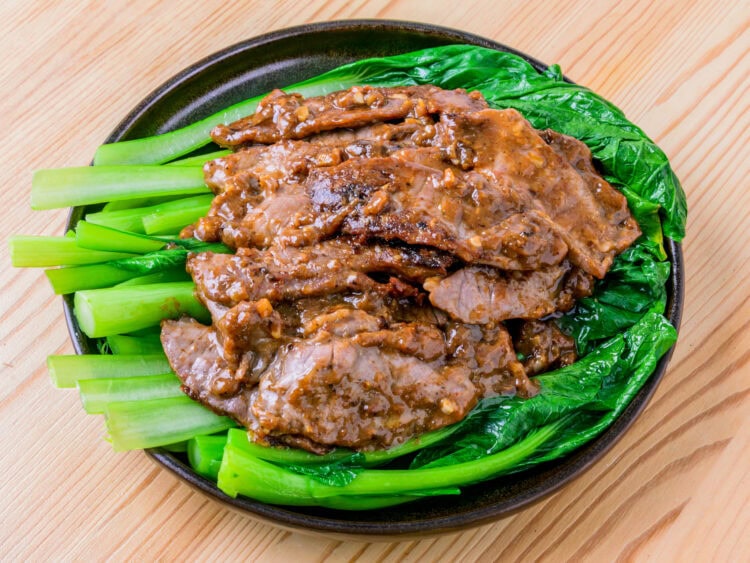A classic Chinese stir-fry of beef with Sa Cha sauce
Like its popular cousin Sa Cha chicken, Sa Cha beef (沙茶牛肉) is a staple of the Chinese home-cooking repertoire often found on small family buffet tables. Serve it with fried rice, vegetable noodles, plain rice, hong shao rou, and a side of blanched greens for a satisfying Asian spread.
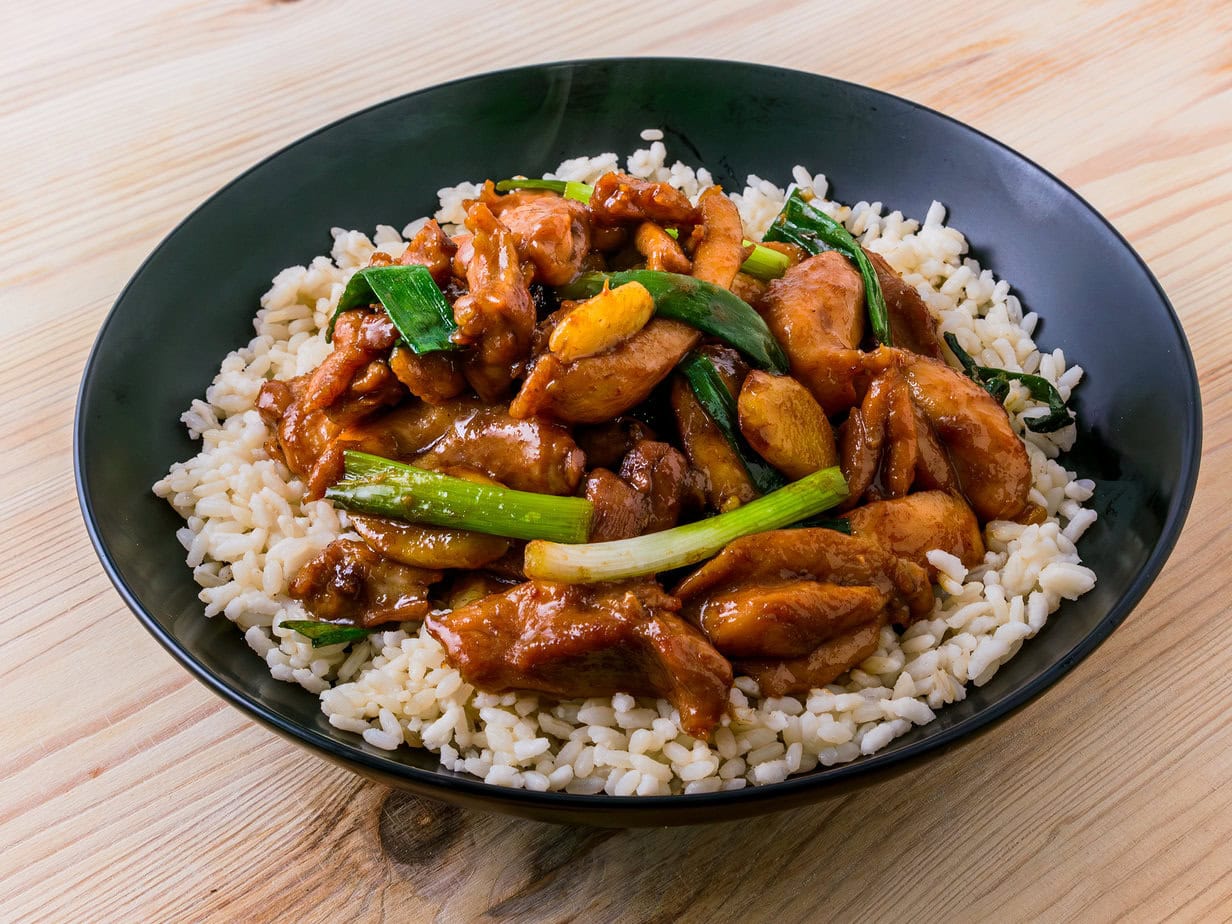
Origins of Sa Cha Beef
Because Sa Cha sauce was born in Chaozhou in China’s Guangdong province, it is safe to assume that the beef dish cooked with it originated there as well.
That’s really all there is to it. If you are not familiar with the sauce (it is widely used in Chinese hotpot), it is typically made with soybean oil, garlic, shallots, chilies, dried brill fish, and dried shrimp.
The exact ratios vary from brand to brand and from one restaurant to the next, so the flavor can differ significantly.
Main ingredients of Sa Cha stir-fried beef
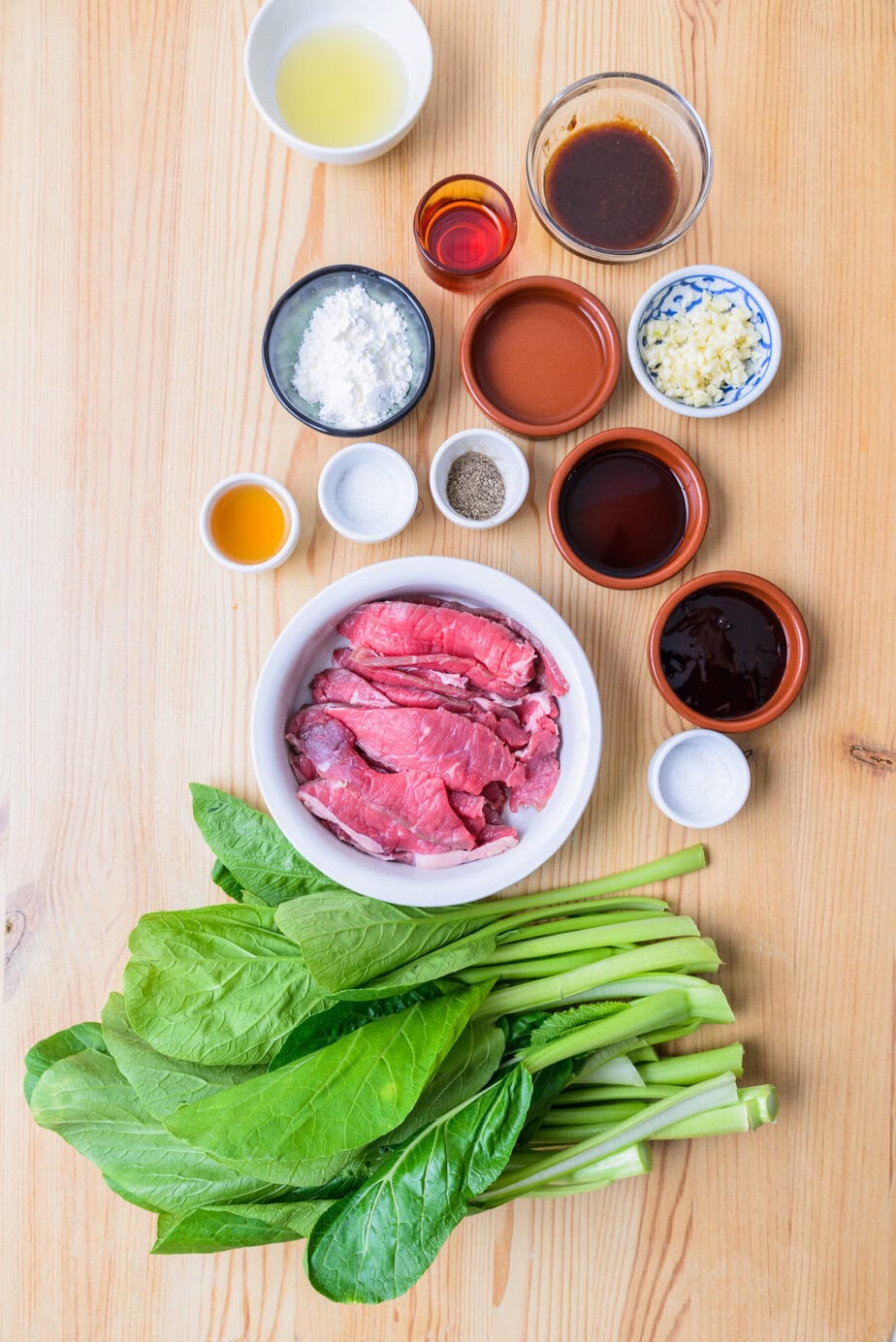
The beef: Use a quick-cooking cut such as rib-eye or sirloin
Oyster sauce: It does not taste like oysters; it simply adds a rich savory note. A vegetarian version is available for anyone with shellfish allergies
Light soy sauce: a light, salty soy sauce you can find in any grocery store
Shaoxing wine: a traditional Chinese rice wine; dry sherry or sake are acceptable but imperfect substitutes
Cornstarch: an essential part of the marinade; it helps the seasonings adhere and gives the beef a silky texture
Sesame oil: Use either toasted or virgin oil – the only difference is how intense the sesame flavor is. I prefer toasted
Kai lan: also called Chinese broccoli, it is a staple vegetable in Chinese cooking
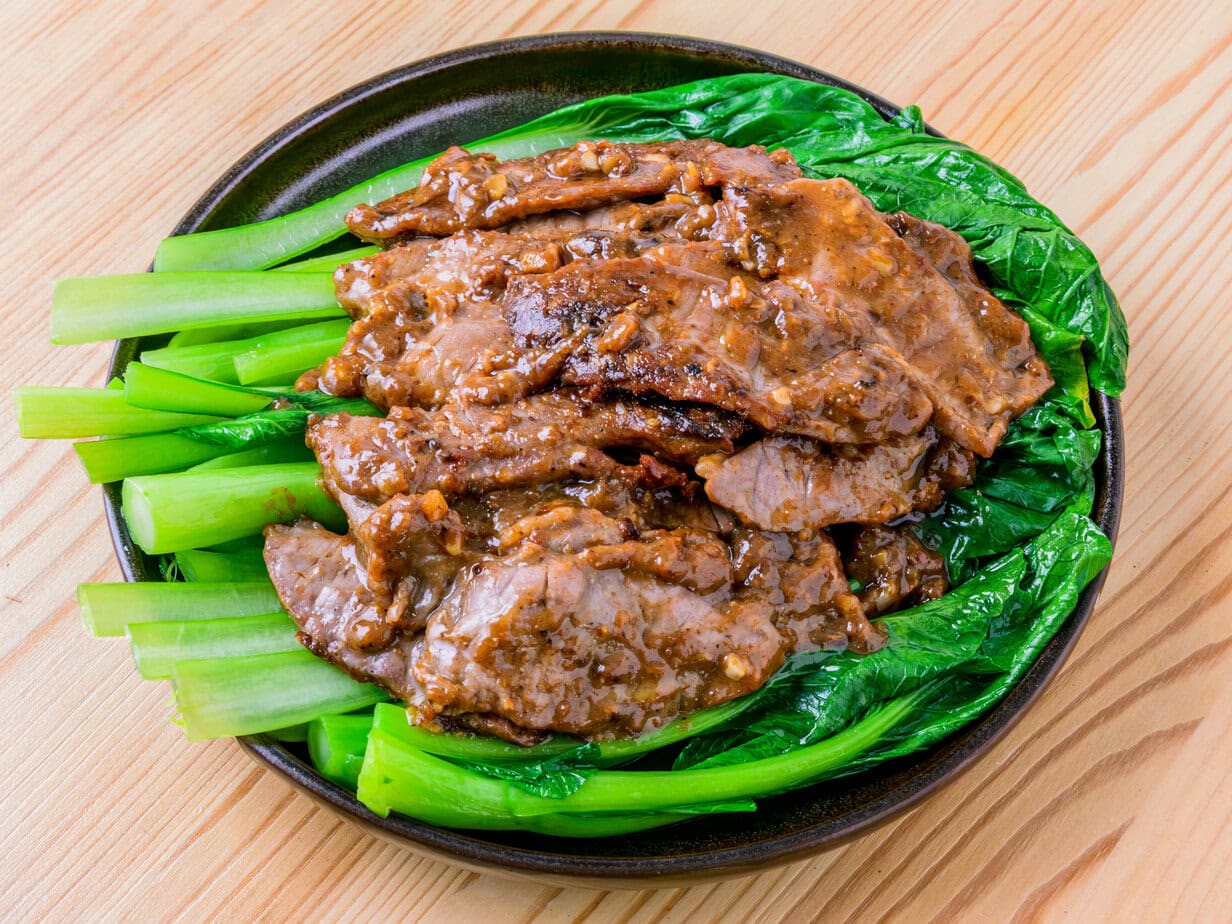
Sa Cha beef
Equipment
Ingredients
- 200 g beef thinly sliced
- 1 small bunch Chinese broccoli gai lan; substitute with bok choy
Marinade
- 0.5 teaspoon salt
- 1 tablespoon oyster sauce
- 0.5 tablespoon light soy sauce
- 0.25 teaspoon ground white pepper
- 0.25 teaspoon sugar
- 0.5 tablespoon Shaoxing wine
- 2 tablespoons water
- 3 teaspoons cornstarch
- 1 teaspoon sesame oil
Stir-fry
- cooking oil as needed
- 3 cloves garlic minced
- 2 tablespoons Sa Cha sauce
Instructions
- Thinly slice the beef, then combine it in a bowl with all the marinade ingredients.200 g beef, 0.5 teaspoon salt, 1 tablespoon oyster sauce, 0.5 tablespoon light soy sauce, 0.25 teaspoon ground white pepper, 0.25 teaspoon sugar, 0.5 tablespoon Shaoxing wine, 2 tablespoons water, 3 teaspoons cornstarch, 1 teaspoon sesame oil
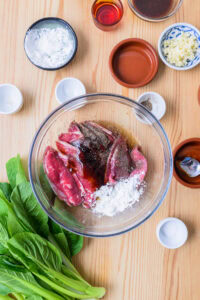
- Let the beef marinate for 15 minutes.
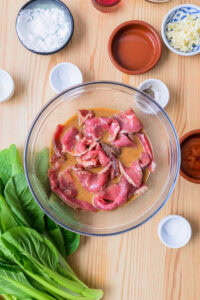
- Blanch the vegetables: Bring a large pot of water to a boil, add a pinch of salt and 1 teaspoon neutral oil.1 small bunch Chinese broccoli
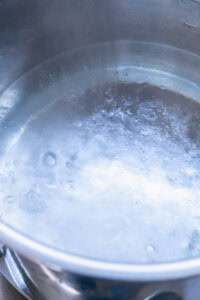
- Cook for 10–15 seconds, just until bright green and crisp-tender. Don’t overcook.
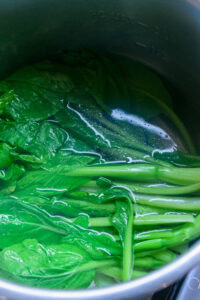
- Pour enough oil into a large pan to coat the bottom in a 2–3 cm layer. Heat to 120–140 °C.cooking oil
- Lay the beef slices in a single layer. Sear for 5–10 seconds, then stir gently until they just change color.
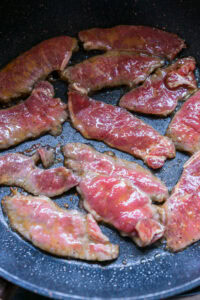
- As soon as the beef turns opaque, scoop it out, leaving about 1 tablespoon of oil in the pan. Reserve the rest for another stir-fry.
- Add the garlic and Sa Cha sauce and sauté over medium heat for about 30 seconds, until fragrant.3 cloves garlic, 2 tablespoons Sa Cha sauce
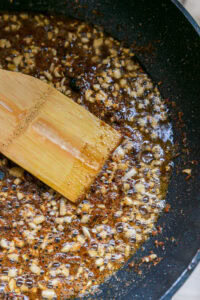
- Return the beef to the pan and toss for 1–2 minutes to coat.
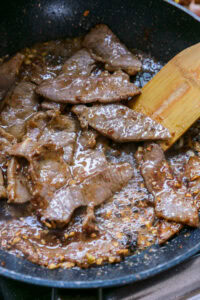
- Serve the beef with the blanched greens alongside.
Notes
Nutrition
Culinary sources
I adapted this recipe from the one on “China Sichuan Food”, increasing the amount of garlic.
